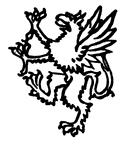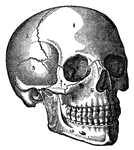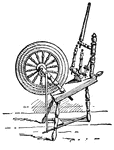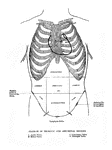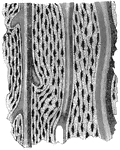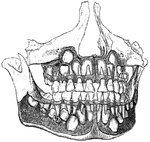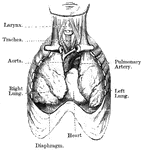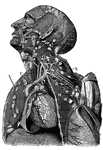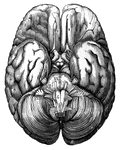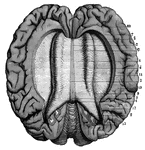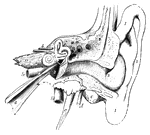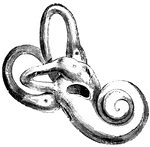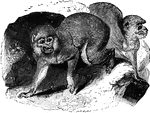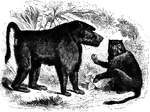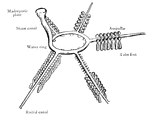
Starfish
The common starfish is a five rayed star. The central body is called the disk and the arms are the rays.…

Trichina
The most dangerous of the parasitic round-worms is Trichina. This is trichina encysted in human muscle.

Arm Muscle
A,b,c, deltoid muscle; d, coracobrachialis muscle; r,r, triceps;e,i, extensors of the hand; km, flexor…
Bones of Arm
Arm of humans; h Humerus or bone of upper arm; r and u Radius and Ulna, or bones of the forearm; c Carpus,…
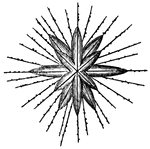
Polycystina
Polycystina are microscopic in size and possess a structureless sarcode-body, enclosed in a perforated…
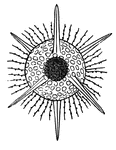
Polycystina
Polycystina are microscopic in size and possess a structureless sarcode-body, enclosed in a perforated…

Rotifer
The rotifer or "wheel animalcule" owes its name to the fact that the anterior end of the body is almost…

Rotifer
The rotifer or "wheel animalcule" owes its name to the fact that the anterior end of the body is almost…
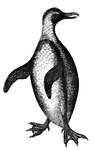
Penguin
Penguins are adopted for a completely aquatic life. The body is boat-shaped, the neck long, and legs…
Smooth Caterpillar
The body is cylinder and divided by rings into thirteen segments. The smooth caterpillars don't have…

Spanner Caterpillar
Caterpillars are insects that are cylinder and are divided by rings into 13 segments. The spanner caterpillar…

Facial Angles
The facial angle is an angle formed by two imaginary lines; one drawn fom the most prominent part of…
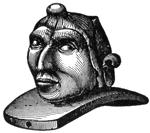
Indian Pipe Shaped as Human Head
Indian pipe in the shape of a human head, used for smoking tobacco.
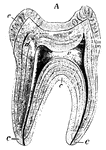
Human Tooth
A tooth is generally described as possessing a crown, neck, and root. Side view of a tooth.
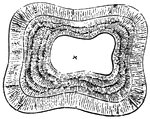
Human Tooth
A tooth is generally described as possessing a crown, neck, and root. Top view of a tooth.; 1. Central…
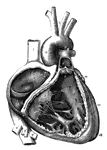
Human Heart
The interior of the heart is divided longitudinal into the right and left sections. Each right and left…

Human Heart
1 Right pulmonary veins; 1' Cavity of the auricle; 2 Wall of the auricle; 3,3' Walls of the ventricle;…
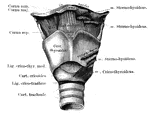
Human Larynx
The part of the respiratory tract between the pharyna and the trachea. Responsible for speech.

Human Brain
A top view of a dissection of the human brain showing the lateral fourth and fifth ventricles.
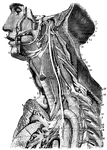
Human Nerve System
Diagram of the upper half of a male human showing the routes of the nervous system.

Human Brain
Side diagram of the human brain showing which parts of the brain control hearing, speech, vision, legs,…

Human Brain
Side diagram of the human brain showing which areas perform the sense of taste, smell, and vision.

Robin Hood killing the Guy of Gisbourne
Robin Hood driving his blade through Sir Guy of Bisbourne's body.
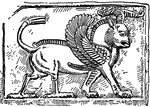
Assyrian Relief Sculpture
The griffin, a monster with a lion's or panther's body and the head and wings of an eagle, played an…

Laurel Hill
"Advance of General Rosecrans's division through the forests of Laurel Hill to attack the Confederate…
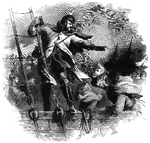
Burnside Expedition
"Burnside Expedition- the fleet and transports off Hatteras during the storm- the general giving orders.…

Battle of Mill Spring
"Battle of Mill Spring, on the Cumberland River, near Jamestown, between a confederate force, 8,000…

Red Lemur
"This lemur is noted for its brillant colorings, the greater part of the body being covered with a vivid…
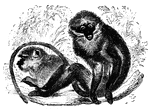
Sooty Monkey
"C. fuliginosus, has the upper parts of the body generally of a smoky gray; the lower parts…

Buffon Macacus
"M. cynomolgus. The hair of this mammal is short, of a brown olive, spotted with black on the…
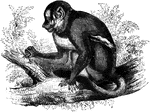
Douroucouli Monkey
"N. trivirgatus. Its generl color is gray: its body and head measure ten inches. It lives on…

Cheirogale
"These animals have round heads, like the cats, the short snout, the lips garnished with mustaches,…
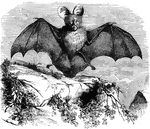
Egyptian Slit-Faced Bat
Nycteris Thebaica. "In this genus both the tail and the interfemoral membrane are greatly developed,…
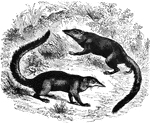
Tupaias
"These are small animals, having somewhat the form and agility of squirrels. The head is long, the snout…
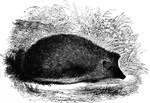
Hedgehog
"The body is short, thick, and stout; the nose pointed, the tail short or entirely wanting, and the…
